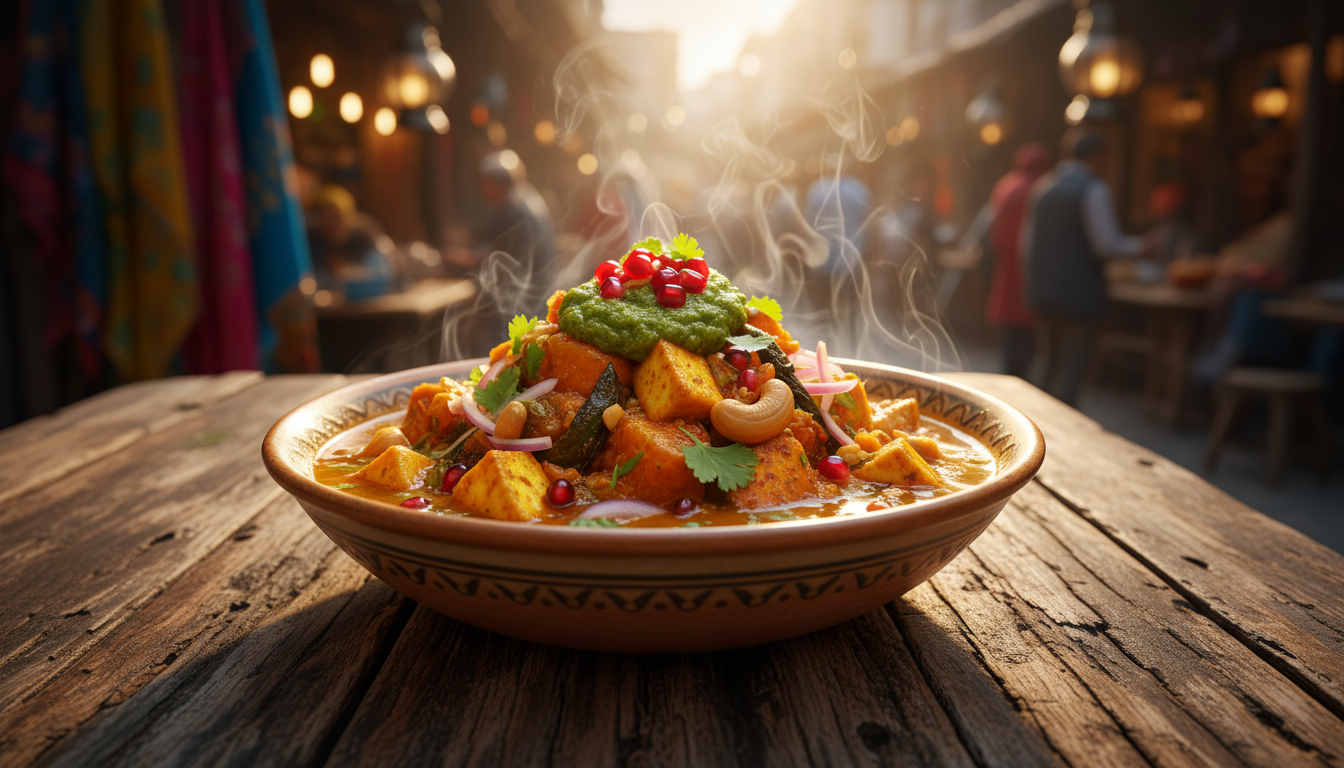Travel has always been a way to explore new places and experience different cultures, but the modern traveler is increasingly driven by the palate. In 2025, the motivation to savor the world through its food is a major trend, transforming how itineraries are planned and destinations are chosen. Culinary tourism is no longer a niche pursuit; it is a fundamental pillar of the authentic travel experience, offering profound insights into a community’s history, traditions, and identity through shared meals and local ingredients.
From Michelin-starred restaurants to bustling street food markets, the pursuit of authentic local flavors has elevated certain regions into must-visit destinations for any self-proclaimed ‘foodie.’ This article explores some of the globe’s most captivating culinary travel hotspots, destinations that offer not just food, but an emotional and authentic journey. As travelers continue to seek sustainability and authenticity, these locations demonstrate a commitment to preserving culinary heritage while innovating for the future.
Mexico City, Mexico: The Fusion of Ancient and Modern Flavors
Mexico City stands as a towering, complex megalopolis where pre-Hispanic culinary traditions meet cutting-edge, modern gastronomy. It is a city of unparalleled diversity, easily earning its spot among the top culinary travel hotspots to visit. Its food scene is deeply rooted in history, specifically in the use of corn, chilies, and beans, which form the foundation of countless dishes.
- Street Food Majesty: The city’s street food culture is arguably the best in the world. Tacos al pastor, quesadillas, and tlacoyos are staples, but the real depth lies in the regional variations found across its countless markets (mercados). Visiting Mercado de San Juan offers a chance to sample exotic meats and gourmet ingredients, showcasing the city’s adventurous spirit.
- Fine Dining Renaissance: Beyond the street, Mexico City boasts a vibrant fine-dining scene with restaurants that are frequently ranked among the world’s best. These establishments champion indigenous ingredients and traditional cooking methods while presenting them with modern techniques, reflecting a strong commitment to culinary identity. This blend of high and low gastronomy makes the city a complete culinary destination. The focus on local, seasonal produce also aligns perfectly with the growing trend of sustainable tourism.
Bologna, Italy: The Undisputed Heart of Italian Gastronomy
While Rome and Florence capture the bulk of tourist attention, Bologna, the capital of the Emilia-Romagna region, is the true gourmet epicenter of Italy. Known as La Grassa (The Fat One), it is a destination entirely dedicated to the pleasures of the table. Visiting Bologna is like taking a masterclass in Italian food history.
The region is the birthplace of world-famous products, including Parmigiano Reggiano, Prosciutto di Parma, and Balsamic Vinegar of Modena. This concentration of Protected Designation of Origin (DOP) products underscores the region’s culinary pedigree. For travelers who wish to savor the world, a trip to Bologna is a pilgrimage.
- Essential Dishes: Traditional Bolognese dishes like Tagliatelle al Ragù (the true “Bolognese” sauce, which notably does not include spaghetti), Tortellini in Brodo, și Lasagne Verdi are non-negotiable must-tries. The simplicity of the ingredients belies the complexity of the preparation and the depth of flavor.
- Experience-Driven Learning: The best way to engage with the food here is through hands-on experience. Numerous cooking schools and market tours allow travelers to learn the art of pasta-making directly from sfogline (women who hand-roll the pasta), turning a simple meal into an authentic cultural exchange.
Cape Town, South Africa: The Rainbow Cuisine
Cape Town’s food scene is a dazzling reflection of its history, a melting pot of Malaysian, Dutch, Indian, and indigenous African influences. This blend, often referred to as ‘Cape Malay’ cuisine, creates a unique, spicy, and often sweet flavor profile that is distinct from the rest of the continent. This city offers some of the most diverse culinary travel hotspots to visit in Africa.
- Sea and Land: Situated between two oceans, Cape Town offers incredible access to fresh seafood. From humble fish and chips on the harbor to sophisticated grilled calamari, the ocean’s bounty is a daily feature. Meanwhile, the fertile valleys nearby, such as Stellenbosch and Franschhoek, are the heart of South Africa’s internationally recognized wine industry. Wine tourism here is seamlessly integrated with the dining experience.
- The Bo-Kaap Flavors: A visit to the colorful Bo-Kaap neighborhood is essential for tasting true Cape Malay flavors, characterized by dishes like Bredie (a slow-cooked stew) and Bobotie (a spiced minced meat baked with an egg-based topping). This area represents an authentic cultural and gastronomic hub, a vibrant part of the city’s identity.
Seoul, South Korea: Innovation Meets Tradition
South Korean cuisine, Hansik, has surged in global popularity, driven by its complex flavors, focus on fermented ingredients (like Kimchi), and health benefits. Seoul, the dynamic capital, is the epicenter where millennia-old preservation techniques are applied in ultra-modern contexts, making it an exciting addition to the list of culinary travel hotspots to visit.
The Korean dining experience is fundamentally communal, emphasizing shared side dishes (Banchan) and grilled meats (Gogi-gui). This focus on communal dining fosters an emotional connection with the local culture.
- Gourmet Korean BBQ: While Korean BBQ is internationally known, experiencing it in Seoul is different. The quality of the aged meats, the sophistication of the side dishes, and the atmosphere of the specialized restaurants elevate the experience.
- Global Recognition and Future Focus: Seoul is gaining increasing international recognition for its unique blend of traditional temple cuisine and high-end fusion restaurants. Furthermore, the city’s integration of technology, including AI in food service and digital ordering, makes it a trendsetter in the modern gastronomic landscape. The future of food innovation is being written here.
Conclusion: The Enduring Appeal of Food as a Destination
These destinations prove that food is the most immediate and profound way to connect with a place. The journey to savor the world through these culinary travel hotspots to visit is one that feeds not just the stomach, but the soul. As we look towards 2025 and beyond, the focus on authenticity, sustainability, and emotional connection in travel will continue to push gastronomy to the forefront of adventure. Whether you are exploring a market in Mexico City or learning to roll pasta in Bologna, these edible experiences offer the richest memories.

 The Age of the Edible Journey: Culinary Travel Hotspots to Visit">
The Age of the Edible Journey: Culinary Travel Hotspots to Visit">
